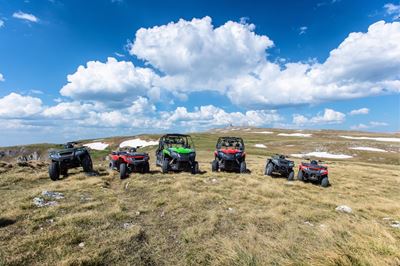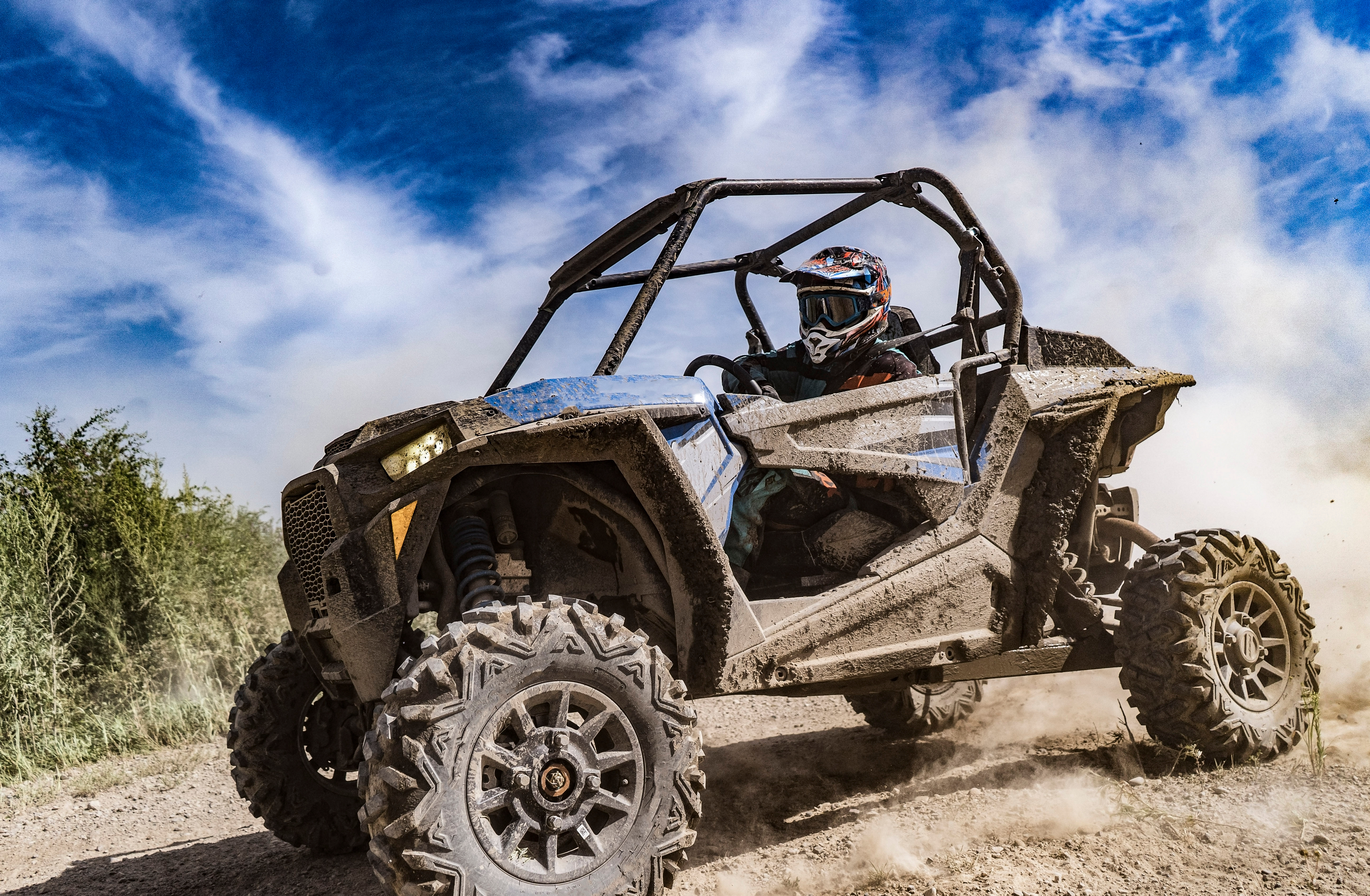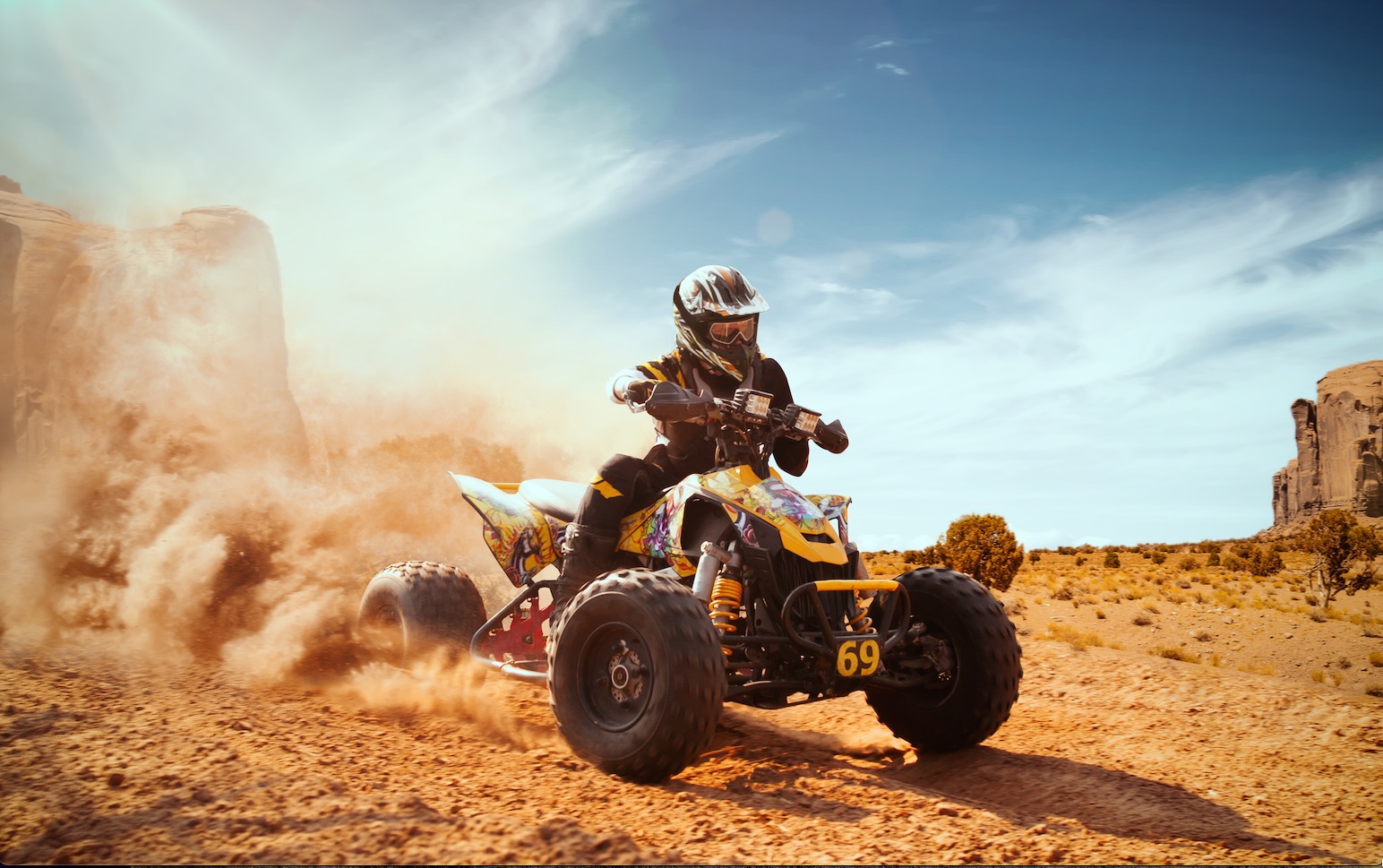Changing your zip code will clear your Pre-Approval.
Zip / postal code is required.
UTV vs. ATV: What’s the Difference?

Off-roading has been a steadily growing hobby for the last several decades. The coronavirus pandemic cooled down the overall growth of off-roading, but it appears ready to skyrocket once again. In 2020, the off-road vehicle market was valued at $14 billion and is expected to reach $18 billion by 2026.
Going on an off-road adventure isn’t too hard depending on the type of vehicle that you own. If you own a Jeep or truck, then it’s just a matter of switching out your street tires for the right off-roading ones. If you own a sedan or minivan, then you’ll need to buy an off-highway vehicle before you can conquer nature.
Not all off-highway vehicles are the same as they are each designed for specific purposes. You’ll need the right type of vehicle to match the adventure that you want to have. The two best options are going to be either a UTV or an ATV. While they might sound similar, there are a few key differences between the two of them.

What Is a UTV?
UTV is short for utility task vehicles and they are sometimes referred to as “side-by-sides”. The sale of UTVs has steadily risen over the years as they’re family-friendly, highly versatile, and easy to upgrade. Current estimates are that nearly 500,000 UTV units are produced each year. A base model UTV will cost around $8,000 to $15,000 but can reach as high as $40,000 depending on the options.
Standard UTVs come with either four or six wheels. Both bench seating and bucket seats are available and come with seatbelts for safety. The driving mechanics of a UTV are similar to a car as they are operated by a steering wheel and pedals. There are several options for the cab as it could be shielded by rollbar, cage, or completely closed in with windshields. The top speed of a UTV is typically around 85 MPH, but that will largely depend on the model.
There are essentially three different types of UTV available:
-
Multipurpose vehicles are the most popular type of UTV. The high level of versatility and customization offers the perfect blend of purpose and recreation.
-
Sport models are commonly accessorized and allow for a variety of uses. People who own these types of UTV typically skew toward social activities, group riding, and carrying passengers.
-
Utility models are highly durable and practical so they make for excellent workhorses. There is little desire to upgrade or modify utility models as owners use them to complete specific tasks.
What Are the Pros and Cons of Owning a UTV?
A lot of people gravitate toward UTV due to its ease of accessibility. If you can handle driving a car that has all-wheel drive or four-wheel drive, then you can pretty much handle a UTV.
The simplicity of operating a UTV offers a variety of pros, including:
-
Safety. Pretty much all UTVs come with several safety features including a cabin, roll bars, windshield, and seatbelts. Going off-road can be quite dangerous and owning a UTV is the best bet for minimizing risk and avoiding injury.
-
Hauling ability. UTVs are capable of transporting up to five passengers and have a strong towing capacity as well. Certain models of UTV come with cargo boxes, winches, and trailer hitches making them a perfect utility vehicle for farms, ranches, and other job sites.
Owning a UTV comes with a few benefits, but there are a few downsides too, including:
-
Price. The price tag of a UTV is typically much higher than an ATV. Not only are the base models more expensive, but the endless list of customizations will cost you as well. You’ll need to use your UTV quite a bit in order to justify the cost.
-
Poor agility. A UTV is an excellent off-road vehicle when compared to street vehicles. However, it’s not nearly as agile as an ATV. You can reach most places with a UTV, but there are some places in the wilderness that can only be reached with an ATV.
Safety Tips for Driving a UTV
Operating a UTV is generally pretty safe, but that doesn’t mean that you should be reckless. These are a few safety tips that should follow when operating a UTV:
-
Wear a helmet. Most UTV riders don’t wear a helmet because of the roll cages and cabin. However, there is no such thing as being too safe. Some states require a helmet for operating a UTV, but you should wear one even if yours doesn’t.
-
Know your limits. UTVs are capable of a lot, but they have their limits. Remember that UTVs are taller, bulkier, and less agile than ATVs. You’ll need to keep that in mind when you head off into the wild.
-
Stay inside. Keep your arms and legs inside of the UTV whenever it’s in motion. The chances of colliding with a tree or other obstacle are much higher when you’re off-road. Remaining inside your UTV can help prevent a catastrophic injury.

What Is an ATV?
ATV is short for all-terrain vehicle and they are sometimes referred to as “four-wheelers” or “quads”. The sale of ATVs is pretty steady year-to-year and reached more than 1.25 million in 2021. The cost range of an ATV is usually between $5,000 and $15,000, but the $10,000 options provide more than enough capabilities.
It’s easiest to think of an ATV like an off-road motorcycle, but with four wheels instead of two. ATVs are made for single riders and require the use of handlebars to steer. Acceleration is handled by a thumb or twist throttle. A majority of ATVs have open tops, but there are some with cab enclosures. There are a lot of options for motor size and the largest ones will offer a top speed exceeding 85 MPH.
There are essentially two different types of ATV available:
-
Utility ATVs are tough, durable, and powerful enough to help you accomplish challenging tasks that might otherwise be impossible. They might not offer the same capabilities as a truck, but they are as close you could ask for in an off-road vehicle.
-
Sport ATVs are quick, lightweight, and agile as they are designed for thrill-seekers. Racers and adventurers alike can both benefit from the powerful engine and excellent suspension.
What Are the Pros and Cons of Owning an ATV?
Unless you have experience with riding dirt bikes or motorcycles, it can take a little while before you learn how to properly operate an ATV. The lack of easy accessibility can be frustrating, but it shouldn’t take too long to pick up.
Once you learn how to use an ATV, these are some of the pros that they offer:
-
Price. An ATV is basically a stripped-down version of a UTV and the cost reflects that. You’ll be able to save several thousand dollars by buying an ATV and still have plenty of adventures.
-
Maneuverability. Cutting down on the comforts of a UTV will allow for an ATV to have much better maneuverability. Their ability to handle tight runs, dense timber, and rocky terrain will allow you to go much deeper into the wilderness than a UTV.
Just like a UTV, there are cons that come with using an ATV, including:
-
Safety. Using an ATV can be a lot of fun, but these machines are very powerful and can be dangerous. The odds of experiencing an injury while using an ATV are much higher than driving a UTV.
-
No passengers. The majority of ATVs are designed with a single rider in mind. There are a few that allow for a passenger, but none of them can carry more than one extra person. The only way to go on adventures with family and friends is if they have their own personal ATV as well.
Safety Tips for Driving an ATV
Operating an ATV can take years to master and will always be a risky hobby. You will need to use common sense and always err on the side of caution to stay safe. These are a few safety tips that can help keep you safe when driving an ATV:
-
Always wear a helmet. No matter the distance or terrain, you should always wear a helmet and keep your head protected. You should also take extra precautions and wear a riding jacket, gloves, and boots.
-
Learn how to properly communicate. You’ll need to learn proper communication techniques whenever you are riding with a group. Ideally, you should use a helmet-based communication system to warn others of hazards and stay together. You should at least learn proper hand signals if you don’t have a helmet system.
-
Don’t ride with a passenger. You shouldn’t ride with a passenger unless your ATV is specifically designed to carry one. Even if there is room, the extra weight of the passenger can make it harder to correctly shift your weight when riding.
Don’t Forget About the Tires
Regardless of whether you opt for a UTV or an ATV, you’re going to need specialized tires. Shopping at Rent A Wheel will allow you to browse a wide variety of off-road options and find the perfect set to match your specific needs.
The best part is that you’ll be able to save some money while you’re at it. Rent A Wheel offers flexible payment options and free shipping so you can quickly and cheaply get back to your off-road adventures.
Sources:
All Terrain Vehicles | MotorCyclesData
Powersports Market Trends | SEMA
$14 Billion Global Off-road Vehicle Market Expected to Grow | PRNewswire
What is an ATV? | ATVSafety Institute